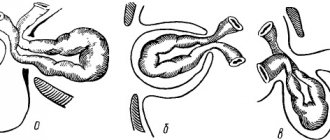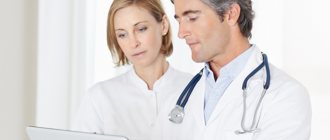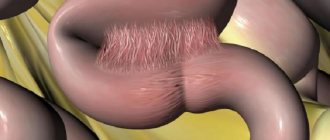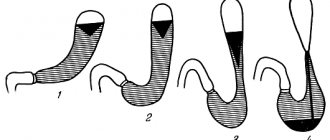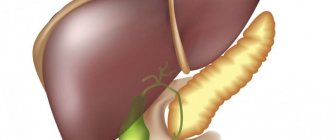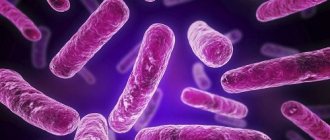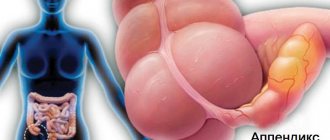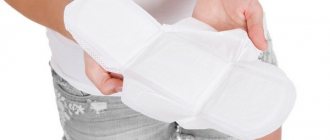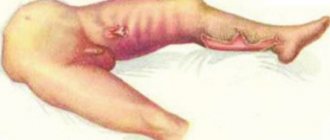Pain during urination and frequent urge, small volume of urine excreted, itching, inflammation, discomfort during sexual intercourse - these are signs of the presence of Escherichia coli in the urine. Escherichia coli is an opportunistic intestinal anaerobic bacterium that strengthens the human immune system and stimulates digestive processes.
Pain during urination and inflammation may indicate the presence of Escherichia coli in the body
Reasons for the appearance of e. coli
Escherichia coli is a naturally occurring anaerobic bacterium in the human body. This is an opportunistic microorganism that lives in the intestines and has more than 100 strains. The generally accepted abbreviation for the name of the bacterium is E. coli. It is also called E. coli.
There are 2 main classes of Escherichia coli:
- Non-pathogenic strains: utilize oxygen, which is harmful to lacto- and bifidobacteria, synthesize vitamins K, B and biotin, promote better absorption of microelements, stimulate metabolism, prevent the occurrence of intestinal infections.
- Pathogenic strains: not normally found in the human body; they cause serious infectious diseases of the gastrointestinal tract and genitourinary system. They are divided into 4 groups: enteropathogenic, enterotoxigenic, enteroinvasive and hemolytic bacteria.
You can see what E. coli looks like in the photo below.
Escherichia coli e. coli
The presence of E. coli in urine can occur due to the following reasons:
- Wearing tight and uncomfortable underwear.
- Poor genital hygiene: insufficient procedures or washing with low-quality products.
- Incorrect washing technique in women.
- Specific sexual acts: anal sex in men, anal-vaginal in women.
- Infection with sexually transmitted infections, as well as sexual intercourse with ejaculation when a partner is infected with E. coli.
- Touching genitals with dirty hands
coli enters the bladder in women 4-5 times more often than in men. This is due to the structure of the excretory organs: the anus and urethra are located nearby, which increases the likelihood of bacterial migration.
Due to weak immunity, infants, preschool and primary school children are also susceptible to infection with E. coli.
E. coli is transmitted through food, water, household and sexual contact.
Treatment
This disease is treated with antibiotics. First, a bacteriological culture is carried out to determine sensitivity to antibiotics and decide which drugs will be effective at a certain stage of the disease. Treatment occurs within 14 days. A couple of months after a long course of treatment, a repeat analysis is performed. If rods are present, treatment is continued with another antibiotic.
When treating intestinal infections, patients are prescribed a gentle diet:
- watery soups;
- porridge with water;
- stale white bread;
- crackers;
- boiled vegetables;
- boiled lean fish and meat.
In case of vomiting or diarrhea, the patient is given a rehydration solution of 400 ml for each moment of vomiting or diarrhea. Take a closer look at each antibiotic:
- The drug Imipenem copes well with harmful bacteria. The advantage of this product is its cost and ease of use (in the form of injections). The downside is the patient's possible allergy to penicillin or other substances of the drug; it is not attributed to it. It should not be taken by children under 3 months of age, during lactation, or by children with renal failure. The drug is dispensed only with a prescription from your doctor.
- Ofloxacin is an effective remedy in the fight against bacilli. The advantage of this drug is oral use (tablets or capsules) and low price. Minus - cannot be used for epilepsy, after a stroke or inflammation of the central nervous system, for children under 18 years of age, during pregnancy, allergies to components or during lactation. It can only be purchased with a prescription.
After recovery, enterosobrents and probiotics are taken for approximately 2 weeks:
- Polyphepan is a natural sorbent that absorbs all possible toxic rods. Plus - you can buy it without a prescription at a low cost. Disadvantage - cannot be taken if you have constipation, gastritis, diabetes or allergies to the main or auxiliary substances.
- Enterol is a probiotic that helps normalize intestinal microflora and is an antidiarrheal agent. Plus - you can buy it at a low cost, without a prescription from your doctor. The downside is that it cannot be taken by those who are allergic to the main or auxiliary components of the drug, or by patients with a central venous catheter installed.
Treatment of Escherichia coli in gynecology
Everyone needs to know how to treat E. coli in gynecology. The treatment process helps relieve inflammation of the female genital organs. Treatment is combined, with an emphasis on local therapy. To get rid of E. coli, it is recommended:
- wash the external genitalia with herbal decoctions;
- perform therapeutic douching;
- insert vaginal suppositories with Nystatin;
- attend ultraviolet irradiation (physiotherapy on the genitals).
In severe cases, drug treatment is prescribed:
- vitamins;
- antibiotics;
- drugs that strengthen the immune system.
https://youtu.be/c1bt5v1i1kE
Symptoms of Escherichia coli in urine
The appearance of E. coli in the urine causes the following pathological conditions:
- In women: vaginitis, peritonitis, adnexitis, endometritis.
- In men: prostatitis, orchitis, epididymitis.
- In representatives of both sexes: urethritis, cystitis, pyelonephritis.
Prostatitis is the most common disease in men caused by E. coli
Typical symptoms of Escherichia coli infection include:
- pain and burning during urination;
- frequent urge to urinate;
- decreased volume of urine excreted;
- itching, redness and burning in the urinary canal;
- impurities in the urine: blood, mucus, clots of pus;
- discomfort during sexual intercourse;
- pungent odor of urine and secretions;
- nagging pain in the lower back, in the kidney area;
- prostate pain, decreased potency in men;
- increased body temperature in children.
Important!
Due to the extensive and nonspecific symptoms, it is not possible to determine the causative agent of the disease without diagnostic procedures.
Prevention
In order not to become infected with harmful bacilli, it is necessary to improve sanitary conditions (clean food, disinfected water, high-quality hand soap). Children should wash their hands and food from which they will prepare dishes more thoroughly. It is recommended to use wet wipes and get rid of antibacterial soap: it reduces immunity by killing beneficial microbes. Try to change towels and bathrobes more often, and wash dishes frequently.
Millions of bacteria live in our body; their total weight is about two kilograms. E. coli occupies far from the last place among them. This bacterium can help a person for a long time in the formation of microflora and digestion, and can at one point turn into a serious medical problem. In our article we will talk about ways to detect E. coli.
E. coli: two sides of the same coin
Escherichia coli, or Escherichia coli, is a rod-shaped bacterium that lives in the intestines of humans and some animals. There are more than a hundred varieties of this stick. Most of them are completely harmless, but some can cause serious illness.
In a healthy person, Escherichia coli lives in the large intestine. Its quantity is usually 104–1010 CFU per 1 ml of contents. In the intestines, this bacterium is involved in the digestion of food, synthesizes the vitamins we need, and also produces organic acids. These acids create a favorable environment for the development of lacto- and bifidobacteria.
The human body has various mechanisms that help control the number of bacteria and limit their habitats. But if the mechanism fails, both mild transient disorders and truly serious illnesses, sometimes fatal, can occur. E. coli can cause various diseases: from diarrhea to severe meningitis and coli-septicemia. The detection of bacteria in any organs except the large intestine already indicates the development of disorders.
Most often, E. coli enters other organs due to poor hygiene or decreased immunity. Getting into the female reproductive system, it causes colpitis, adnexitis, and other inflammatory diseases. Infection is especially dangerous during pregnancy and after childbirth. This can cause intrauterine infection in the baby and cause postpartum endometritis in the mother. Men are also not immune to this danger. E. coli entering the urethra can cause urethritis, prostatitis, inflammation of the appendages and testicles.
In addition, normal E. coli can mutate and become truly dangerous. Some species of this bacterium, such as O157:H7, O104:H4, O121 and O104:H21, produce strong toxins. They can cause hemolytic-uremic syndrome, peritonitis, pneumonia, and food poisoning.
Most often, mutated E. coli enters the body with food, such as unwashed vegetables, poorly processed meat, and milk. But in some cases, such strains can form inside the body as a result of mutations and gene exchange.
When can a test be ordered?
Pathogenic E. coli often causes diarrhea. Escherichiosis usually affects young children and people traveling to countries with poor hygiene (called traveler's diarrhea). A timely analysis will allow you to identify E. coli and begin treatment.
Some dangerous strains of E. coli can cause hemolytic uremic syndrome (HUS). This is a serious condition in which a large number of blood clots form in small vessels, the body’s own red blood cells are destroyed and multiple organ failure occurs - a severe stress reaction of the body. If there is any suspicion of HUS, an analysis for enteropathogenic (dangerous) Escherichia is required.
A routine bacteriological analysis, which is carried out for inflammatory diseases of the reproductive system, postpartum endometritis and others, can also show the presence of E. coli.
Another indication for the study is dysbiosis. Changes in the composition of the intestinal microflora can lead to digestive problems, rumbling and abdominal pain. Impaired formation of vitamins and increased absorption of toxins leads to weakness, fatigue and other nonspecific symptoms.
What types of tests are prescribed if a pathological process is suspected?
Escherichia coli can be detected in feces, urine, smears from the surface of the genital organs or from wounds, and when culturing washing water. Also during research it can be detected in the wound, in the lungs.
The main method of analysis for detecting E. coli is bacteriological culture. To do this, a small amount of material is placed in a nutrient medium on which bacteria multiply very well. The result is calculated after a few days by the number of colonies formed. The unit of measurement is CFU/ml, that is, the number of bacteria from which colonies grew during the study, per milliliter of material.
A sensitivity test to antibiotics or bacteriophages is performed on grown colonies. To do this, microbes are placed in a Petri dish and discs containing a specific antibiotic are placed on its surface. If the antibiotic works, an “empty” ring forms next to the disc, in which there is no growth of microorganisms. The same applies to bacteriophages.
In addition to the manual method, there is also a semi-automatic method for studying sensitivity. To do this, the microbe is “inoculated” not on Petri dishes, but on special cassettes that already contain a certain set of antibiotics. These cassettes are then placed into the analyzer.
There is also a PCR diagnostic method. It allows you to tell whether pathogenic E. coli is present in the material. But this method will not show either the number of bacteria or their sensitivity to drugs.
Other methods that do not involve isolating a pure culture of E. coli can indicate infection only indirectly. For example, a general urine test may reveal bacteria in the form of rods. But in order to determine their type, you will have to take an additional bacteriological culture. The situation is similar with coprograms. The test can provide insight into the condition of the stomach and intestines, but does not identify specific bacteria.
Diagnostics
It is possible to detect an increased content of Escherichia coli in a patient’s urine and identify the degree of microbiological disorders using the following diagnostic techniques:
- Questioning the patient, identifying symptoms.
- Examination of the urinary organs.
- Collection of biochemical and general urine tests.
- Taking cultures for microflora.
The last method is the most significant. If the flora culture reveals the presence of Escherichia bacteria over 105 CFU, the patient is prescribed appropriate treatment, regardless of the absence or presence of severe symptoms.
Features of urine collection
When testing urine for E. coli, a false positive result often occurs. In most cases, this is due to improper collection of material for research:
Taking urine for analysis is carried out as follows:
- To take the test, buy a special sterile jar at the pharmacy.
- The analysis is taken in the morning, immediately after waking up.
- Before the procedure, the patient thoroughly washes his hands with neutral soap.
- Women cover the vaginal opening with sterile cotton wool or a tampon.
- At least 70 ml of urine is taken into the container. The first and last streams of urine are passed.
- The material is sent to the laboratory 1-2 hours after collection.
Correctly collect urine for analysis to obtain a reliable research result
The day before the test, you should not consume coloring foods, diuretics, or perform strenuous physical exercise.
The best option would be to get tested in a medical office using a catheter.
Conducting laboratory tests
To assess the purity of water and food products, laboratory tests of the composition of samples are carried out. Depending on the forms of microorganisms found in the samples under study, the degree, nature, and age of contamination are determined.
If enteropathogenic types of Escherichia are detected in samples, this indicates recent fecal contamination. The presence of Cytobacter and Enterobacter indicates long-standing contamination. E. coli bacteria color Code's indicator medium yellow.
Escherichia coli in urine during pregnancy
According to statistics, during pregnancy the number of E. coli in the urine exceeds the norm 3-4 times more often than in the normal state of the body.
The following factors contribute to an increase in the amount of E. coli in urine:
- Physiological and hormonal changes in the body of a pregnant woman.
- Enlargement of the uterus, causing compression of the kidneys and deterioration of their function.
- Stagnation of urine, which promotes the development of E. coli.
The presence of intestinal bacteria in the urine of pregnant women can cause the following consequences:
- fetal infection;
- miscarriage;
- pathologies of intrauterine development;
- the occurrence of physical defects in the baby;
- cerebral palsy.
To treat expectant mothers, drugs from the groups of bacteriophages and probiotics are used. Antibiotics are prescribed for acute indications and only in cases where the expected benefit to the mother outweighs the potential risk to the fetus.
Bacteria in throat swab
Sometimes E. coli can be found in the mouth. This is usually confirmed by examining a smear from the throat, from the surface of the tonsils. In patients with such changes in the analysis, severe tonsillitis is often observed, prone to relapse.
The detection of microorganisms in a smear often becomes the reason for the initiation of special treatment. Its basis is the use of various antibiotics, after a course of which drugs are prescribed to restore the microflora.
www.mednotess.com
Escherichia coli e. coli in a child
Due to weak immunity, children are more susceptible to E. coli infection than adults. Most often, high levels of E. coli are found in the urine of children of preschool and primary school age.
The cause of infection can be poor hygiene of the genital and excretory organs, wearing unsuitable underwear, and a general decrease in immunity.
In infants, the cause of infection can be:
- decreased immune defense of the body;
- infection in the maternity ward;
- drinking mother's milk;
- insufficient hand hygiene of the child;
- poorly disinfected pacifiers and bottles.
To protect your baby from E. coli infection, use a sterilizer to treat nipples and bottles
When the number of E. coli in the urine of children is increased, this provokes infectious diseases of the genitourinary system and general depression of the immune system.
Infants and children up to 12 years of age are treated with probiotics, prebiotics and bacteriophages. For acute indications, the use of antibacterial drugs from the penicillin group is permissible.
After 12 years of age, the treatment regimen is similar to that for adults.
